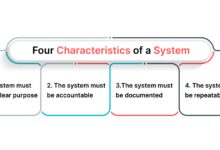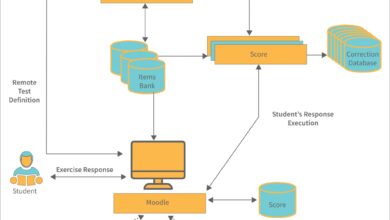System Integration: 7 Powerful Strategies for Seamless Success
In today’s fast-paced digital world, system integration is no longer optional—it’s essential. From startups to global enterprises, businesses are connecting disparate systems to boost efficiency, reduce costs, and unlock real-time insights. Let’s dive into how you can master this game-changing process.
What Is System Integration and Why It Matters

System integration refers to the process of connecting different computing systems, software applications, and technologies to function as a coordinated whole. This allows organizations to streamline operations, eliminate data silos, and improve decision-making through unified access to information. As businesses grow and adopt new technologies, the need for seamless communication between systems becomes critical.
Defining System Integration
At its core, system integration involves linking various IT systems—such as ERP, CRM, HRM, and supply chain platforms—so they can exchange data and work together efficiently. This can include integrating legacy systems with modern cloud-based applications or enabling real-time synchronization between on-premise and remote databases.
- It ensures data consistency across platforms.
- It reduces manual data entry and human error.
- It enhances scalability and agility in business operations.
“Integration is not just about technology—it’s about aligning business processes, people, and data to achieve strategic goals.” — Gartner Research
Types of System Integration Approaches
There are several architectural models used in system integration, each suited to different organizational needs and technical environments:
- Point-to-Point Integration: Direct connections between two systems. While simple, it becomes unmanageable as the number of systems grows.
- Vertical Integration (Silos): Systems are grouped by function (e.g., finance, sales), which can limit cross-functional visibility.
- Horizontal Integration (Enterprise Service Bus – ESB): Uses a middleware layer to connect multiple applications, enabling scalable and standardized communication.
- Star Integration: A central hub connects all systems, reducing complexity compared to point-to-point but still challenging to maintain.
- Common Data Format Integration: All systems translate data into a shared format, improving interoperability.
Choosing the right approach depends on your organization’s size, infrastructure, and long-term digital strategy.
Business Benefits of System Integration
The value of system integration extends far beyond technical connectivity. When done right, it transforms how organizations operate:
- Improved Operational Efficiency: Automated workflows reduce manual tasks and accelerate processes like order fulfillment and invoicing.
- Enhanced Data Accuracy: Real-time data synchronization minimizes discrepancies and ensures reliable reporting.
- Better Customer Experience: Integrated CRM and support systems provide a 360-degree view of the customer journey.
- Cost Reduction: Eliminates redundant systems and lowers maintenance overhead.
- Scalability: Supports business growth by enabling new applications to plug into existing ecosystems easily.
For example, a retail company integrating its e-commerce platform with inventory and logistics systems can offer real-time stock updates and faster delivery estimates—directly boosting customer satisfaction.
Key Challenges in System Integration
Despite its benefits, system integration is not without hurdles. Organizations often face technical, organizational, and strategic obstacles that can delay or derail integration projects.
Data Inconsistency and Silos
One of the biggest challenges is dealing with fragmented data stored in isolated systems. Legacy databases, spreadsheets, and department-specific tools often use different formats, naming conventions, and update cycles.
- Data duplication leads to confusion and poor decision-making.
- Inconsistent customer records across CRM and billing systems create service gaps.
- Lack of a single source of truth undermines analytics and compliance efforts.
Solving this requires robust data mapping, transformation rules, and master data management (MDM) strategies. Tools like MuleSoft and Talend help standardize and synchronize data across platforms.
Legacy System Compatibility
Many organizations still rely on outdated systems that were not designed for modern integration protocols. These legacy applications may lack APIs, use proprietary databases, or run on obsolete operating systems.
- Integrating them with cloud services often requires custom middleware or wrapper solutions.
- High maintenance costs and limited vendor support increase risk.
- Security vulnerabilities in old systems can compromise the entire network.
A phased migration strategy—where legacy systems are gradually replaced or modernized—can mitigate these risks. For instance, using API gateways allows secure exposure of legacy functionality without full rewrites.
Security and Compliance Risks
Connecting systems increases the attack surface for cyber threats. Sensitive data flowing between applications must be protected through encryption, access controls, and audit trails.
- GDPR, HIPAA, and CCPA require strict data handling practices during integration.
- Improper authentication can lead to unauthorized access.
- Real-time monitoring is needed to detect anomalies and breaches.
Best practices include implementing zero-trust architecture, conducting regular penetration testing, and ensuring all integration tools comply with industry standards. The ISO/IEC 27001 framework provides guidelines for securing information exchanges.
7 Powerful System Integration Strategies You Need
To overcome common pitfalls and achieve lasting success, organizations should adopt proven integration strategies tailored to their goals and infrastructure.
1. Adopt an Enterprise Service Bus (ESB)
An ESB acts as a central communication backbone for all enterprise applications. It enables message routing, transformation, and protocol mediation between systems.
- Supports both synchronous and asynchronous communication.
- Enables real-time data exchange across departments.
- Reduces dependency on point-to-point connections.
Popular ESB platforms include IBM App Connect, Apache Camel, and WSO2. These tools provide scalability and fault tolerance, making them ideal for large enterprises.
2. Leverage API-First Design
Building systems with APIs as the foundation ensures future-proof integration. An API-first approach means designing application interfaces before developing the actual software.
- Encourages modular, reusable components.
- Speeds up development and third-party integrations.
- Facilitates microservices architecture and cloud adoption.
Companies like Netflix and Amazon have thrived by exposing internal services via well-documented APIs. Tools like Swagger and Postman help design, test, and document APIs effectively.
3. Implement Middleware Solutions
Middleware sits between operating systems and applications, enabling seamless data flow. It handles tasks like data transformation, queuing, and security enforcement.
- Acts as a translator between incompatible systems.
- Provides logging and error handling capabilities.
- Supports hybrid environments (on-premise + cloud).
Examples include Microsoft BizTalk Server, Oracle Fusion Middleware, and open-source options like Apache Kafka for event-driven integration.
4. Use iPaaS (Integration Platform as a Service)
iPaaS is a cloud-based solution that simplifies integration without heavy infrastructure investment. It offers pre-built connectors, drag-and-drop workflows, and automated scaling.
- Ideal for SMEs and fast-growing startups.
- Reduces time-to-market for new integrations.
- Offers built-in monitoring and analytics.
Leading iPaaS providers include MuleSoft Anypoint Platform, Dell Boomi, and Zapier. These platforms support both application and data integration across hybrid environments.
5. Embrace Microservices Architecture
Instead of monolithic applications, microservices break functionality into small, independent services that communicate via APIs. This makes system integration more flexible and resilient.
- Each service can be developed, deployed, and scaled independently.
- Failures in one service don’t bring down the entire system.
- Easier to integrate with third-party tools and cloud platforms.
Netflix, Uber, and Spotify use microservices to manage complex, high-traffic systems. Containerization with Docker and orchestration via Kubernetes further enhance this architecture.
6. Prioritize Data Governance and Master Data Management (MDM)
Effective system integration requires clean, consistent, and trustworthy data. MDM creates a single, authoritative source of key business entities like customers, products, and suppliers.
- Eliminates duplicate records and conflicting information.
- Ensures regulatory compliance and audit readiness.
- Improves analytics accuracy and business intelligence.
Tools like Informatica MDM, SAP Master Data Governance, and Oracle MDM Cloud help organizations centralize and standardize critical data assets.
7. Automate Integration Testing and Monitoring
Continuous testing ensures that integrations remain stable as systems evolve. Automated monitoring detects issues before they impact users.
- Use tools like Selenium, JUnit, or Postman for API testing.
- Implement real-time dashboards with tools like Datadog or New Relic.
- Set up alerts for latency spikes, failed transactions, or data mismatches.
Automation reduces downtime and improves reliability, especially in complex, multi-system environments.
Real-World Examples of Successful System Integration
Theoretical knowledge is valuable, but real-world case studies illustrate how system integration drives tangible results.
Retail: Walmart’s Omnichannel Integration
Walmart integrated its online store, mobile app, in-store POS, and supply chain systems to deliver a seamless omnichannel experience.
- Customers can order online and pick up in-store (BOPIS).
- Inventory levels are updated in real time across all channels.
- Data from online behavior informs in-store promotions.
This integration reduced stockouts by 30% and increased customer retention by 25%.
Healthcare: Mayo Clinic’s Interoperability Initiative
Mayo Clinic implemented a unified health information exchange (HIE) to connect electronic health records (EHRs) across departments and partner hospitals.
- Doctors access complete patient histories instantly.
- Lab results are shared securely between facilities.
- Reduced redundant tests and improved diagnosis accuracy.
The system integration project contributed to a 20% reduction in patient wait times and enhanced care coordination.
Manufacturing: Siemens’ Digital Twin Integration
Siemens uses digital twin technology—virtual replicas of physical assets—integrated with IoT sensors, ERP, and PLM systems.
- Simulates production processes before deployment.
- Monitors equipment performance in real time.
- Predicts maintenance needs using AI analytics.
This integration has cut downtime by 40% and improved product quality through predictive insights.
Best Practices for Planning and Executing System Integration
A successful system integration project requires more than just technical expertise—it demands strategic planning, stakeholder alignment, and change management.
Define Clear Objectives and KPIs
Start with a clear understanding of what you want to achieve. Are you aiming to improve customer service? Reduce operational costs? Enable faster reporting?
- Set measurable goals like “reduce order processing time by 50%.”
- Identify key performance indicators (KPIs) such as system uptime, data accuracy rate, or user adoption.
- Align integration goals with overall business strategy.
Without clear objectives, projects can drift into scope creep and fail to deliver value.
Conduct a Comprehensive System Audit
Before integrating, assess your current IT landscape:
- Inventory all existing systems, databases, and applications.
- Evaluate their age, compatibility, and integration readiness.
- Map data flows and identify bottlenecks or redundancies.
This audit helps prioritize integration efforts and avoid surprises during implementation.
Engage Stakeholders Early and Often
System integration affects multiple departments—IT, finance, operations, sales, and customer service. Involving stakeholders from the beginning ensures buy-in and smoother adoption.
- Hold workshops to gather requirements and pain points.
- Establish a cross-functional integration team.
- Communicate progress regularly to maintain transparency.
Resistance to change is a common barrier; proactive engagement reduces friction and fosters collaboration.
Choose the Right Integration Tools and Partners
Selecting the right technology stack and vendor partners is crucial. Consider factors like:
- Scalability and future-proofing.
- Security certifications and compliance support.
- Vendor reputation, customer support, and community resources.
For complex projects, partnering with experienced integration consultants can accelerate delivery and reduce risk.
The Role of Emerging Technologies in System Integration
Advancements in AI, IoT, and blockchain are reshaping how systems integrate and interact.
Artificial Intelligence and Machine Learning
AI enhances system integration by automating data mapping, detecting anomalies, and optimizing workflows.
- AI-powered tools can auto-suggest field mappings during integration setup.
- Machine learning models predict system failures or data inconsistencies.
- Natural language processing (NLP) enables voice-based integration with ERP systems.
For example, IBM Watson integrates with enterprise systems to provide intelligent insights from unstructured data.
Internet of Things (IoT)
IoT devices generate massive amounts of real-time data that must be integrated with backend systems for analysis and action.
- Sensors in factories feed data to ERP and maintenance systems.
- Smart meters in utilities integrate with billing and customer service platforms.
- Wearables in healthcare sync with EHRs for continuous patient monitoring.
Platforms like AWS IoT Core and Microsoft Azure IoT Hub provide secure, scalable integration for device-to-cloud communication.
Blockchain for Secure Data Exchange
Blockchain offers a decentralized, tamper-proof way to share data across organizations.
- Used in supply chain integration to track product provenance.
- Enables secure, transparent financial transactions between partners.
- Reduces fraud and improves auditability.
IBM and Maersk’s TradeLens platform uses blockchain to integrate shipping, customs, and logistics data across global trade networks.
Future Trends in System Integration
The landscape of system integration is evolving rapidly. Staying ahead requires awareness of emerging trends and shifts in technology adoption.
Rise of Event-Driven Architecture (EDA)
Unlike traditional request-response models, EDA enables systems to react to events in real time. For example, when a customer places an order, multiple systems (inventory, shipping, billing) are automatically triggered.
- Improves responsiveness and scalability.
- Supports real-time analytics and decision-making.
- Used extensively in fintech, e-commerce, and smart cities.
Tools like Apache Kafka and AWS EventBridge are driving the adoption of event-driven integration.
Low-Code/No-Code Integration Platforms
These platforms empower non-technical users to build integrations using visual interfaces and pre-built templates.
- Accelerates development and reduces IT backlog.
- Enables citizen integrators in business units.
- Limited in complexity but ideal for simple workflows.
Zapier, Microsoft Power Automate, and Make (formerly Integromat) are popular examples.
Hyperautomation and Intelligent Integration
Hyperautomation combines RPA (Robotic Process Automation), AI, and integration to automate end-to-end business processes.
- Integrates legacy systems with modern automation tools.
- Enables self-healing workflows that adapt to changes.
- Drives operational excellence and cost savings.
Gartner predicts that by 2025, over 70% of organizations will use hyperautomation technologies to streamline operations.
How to Measure the Success of Your System Integration
After implementation, it’s vital to evaluate whether your integration project delivered the expected outcomes.
Track Technical Performance Metrics
Monitor system-level indicators to ensure stability and efficiency:
- Integration uptime and availability (e.g., 99.9% SLA).
- Latency and response time for data exchanges.
- Error rates and failed transaction counts.
Tools like Splunk and Grafana help visualize these metrics in real time.
Assess Business Impact
Ultimately, integration should drive business value. Measure:
- Reduction in process cycle times (e.g., order-to-cash).
- Improvement in data accuracy and reporting reliability.
- Increased employee productivity and customer satisfaction.
Surveys, KPI dashboards, and ROI calculations provide insight into real-world impact.
Gather User Feedback
End-users—whether employees or customers—are the best judges of integration success.
- Conduct interviews or surveys to collect qualitative feedback.
- Identify usability issues or unmet needs.
- Use insights to refine and optimize the integrated system.
Continuous improvement ensures long-term relevance and effectiveness.
What is system integration?
System integration is the process of connecting different IT systems, software applications, and technologies so they can work together seamlessly, share data, and function as a unified ecosystem. It aims to improve efficiency, reduce redundancy, and enhance decision-making across an organization.
What are the main types of system integration?
The main types include point-to-point, vertical (silos), horizontal (using an Enterprise Service Bus), star integration, and common data format integration. Each has its own strengths and is suited to different organizational structures and technical environments.
What are the benefits of system integration?
Key benefits include improved operational efficiency, enhanced data accuracy, better customer experiences, cost savings, and scalability. It also supports digital transformation and enables real-time analytics and automation.
What are common challenges in system integration?
Common challenges include data silos, legacy system compatibility, security risks, lack of standardization, and organizational resistance to change. These can be mitigated through careful planning, modern tools, and strong governance.
What tools are used for system integration?
Popular tools include MuleSoft, Dell Boomi, Apache Kafka, IBM App Connect, Zapier, and Talend. Cloud-based iPaaS platforms are increasingly favored for their flexibility and ease of use.
System integration is a powerful enabler of digital transformation. By connecting disparate systems, organizations unlock efficiency, agility, and insight. While challenges exist—from legacy systems to data silos—strategic approaches like ESB, iPaaS, microservices, and API-first design can overcome them. Real-world examples from Walmart to Siemens show the tangible impact of successful integration. As technologies like AI, IoT, and blockchain evolve, the future of system integration will be even more intelligent, automated, and secure. The key to success lies in clear goals, stakeholder engagement, and continuous measurement. Whether you’re a small business or a global enterprise, mastering system integration is no longer optional—it’s essential for staying competitive in the digital age.
Further Reading:









